Svantevit – Four-Headed War God Of The Slavic Peoples Of Central Europe
A. Sutherland - AncientPages.com - Among the numerous deities of the Slavic peoples of central Europe, the most prominent place was occupied by Svantevit, the war god (Svetovit, Sventovit).
Svantevit-statue made by Marius Grusas at the cape Arkona on the island Rügen (reproduction). Image credit: Lapplaender - CC BY-SA 3.0 DE
Svantevit was depicted with four necks and four heads, two of them facing in front and two behind. Multiple heads were the most crucial feature of the Slavic pantheon of gods. It is believed that Svantevit's four heads stand for the four sides of the world that this all-seeing god is looking at.
It is believed that Svantevit may also have been worshipped as a supreme deity and seen as a father to other gods.
His attributes were a sword, a bridle, a saddle, and a white horse. His worshipers believed the god would mount a sacred white horse and ride out at night against those who denied his divinity. In the morning, the horse was often discovered to be covered in sweat.
Svantevit possessed several major temples under the care of an inferior class of priests, each with a guard of more than a hundred men.
It is believed that Svantevit may also have been worshipped as a supreme deity and seen as a father to other gods.
The center of his worship was in Arkona (Arcona) - the ancient temple of the Slavs built on a high rocky shore of the Baltic island of Rugen, Germany.
Within the sanctuary, enclosed by two fences, arose a gigantic statue of Svantevit nearly thirty feet tall.
Later, his temple at Arkona was destroyed by King Valdemar of Denmark and his Christian adviser Absalon in 1169, but the Danish King conquered Arkona after solid resistance. He first seized the temple's treasure and then ordered the destruction of the sanctuary. Many native inhabitants gathered, expecting every moment that Svantevit would appear and annihilate their enemies, but he never came.
Finally, even his statue was torn down, and it was a very ominous sign for many of Svantevit's worshippers.
They believed that the demon was involved in the temple's destruction and left the four-headed god's statue in the shape of a black animal, which disappeared before the eyes of the spectators.
Written by – A. Sutherland - AncientPages.com Senior Staff Writer
Updated on Sep 11, 2023
Copyright © AncientPages.com All rights reserved. This material may not be published, broadcast, rewritten or redistributed in whole or part without the express written permission of AncientPages.com
More From Ancient Pages
-
 Did Richard The Lionheart Order Assassins To Kill Conrad Of Montferrat, King Of Jerusalem?
Featured Stories | Dec 27, 2018
Did Richard The Lionheart Order Assassins To Kill Conrad Of Montferrat, King Of Jerusalem?
Featured Stories | Dec 27, 2018 -
 Neanderthals Hunted Dangerous Cave Lions In Eurasia – New Study Shows
Archaeology | Oct 12, 2023
Neanderthals Hunted Dangerous Cave Lions In Eurasia – New Study Shows
Archaeology | Oct 12, 2023 -
 ‘Tonina Chiapas’ Mayan Pyramid In Southern Mexico Is Among The Largest Yet Found
Civilizations | Oct 29, 2018
‘Tonina Chiapas’ Mayan Pyramid In Southern Mexico Is Among The Largest Yet Found
Civilizations | Oct 29, 2018 -
 3,000-Year-Old Fortress Built By The Mysterious Votadini Tribe Discovered On Top Of Arthur’s Seat
Archaeology | Sep 11, 2020
3,000-Year-Old Fortress Built By The Mysterious Votadini Tribe Discovered On Top Of Arthur’s Seat
Archaeology | Sep 11, 2020 -
 What Is Pax Sinica?
Ancient History Facts | Apr 26, 2018
What Is Pax Sinica?
Ancient History Facts | Apr 26, 2018 -
 On This Day In History: Storming Of The Paris Fortress – Prison Bastille – On July 14, 1789
News | Jul 14, 2016
On This Day In History: Storming Of The Paris Fortress – Prison Bastille – On July 14, 1789
News | Jul 14, 2016 -
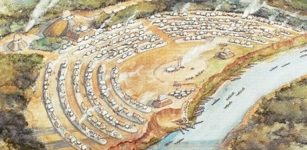 Is The Poverty Point Octagon World’s Largest Ancient Solstice Marker?
Featured Stories | May 21, 2017
Is The Poverty Point Octagon World’s Largest Ancient Solstice Marker?
Featured Stories | May 21, 2017 -
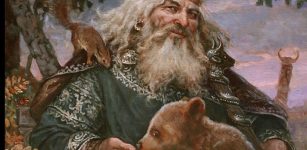 Controversial Ancient Book Of Veles Remains An Unexplained Mystery
Artifacts | Sep 28, 2015
Controversial Ancient Book Of Veles Remains An Unexplained Mystery
Artifacts | Sep 28, 2015 -
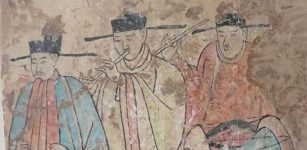 Ancient Fresco Tomb Dated A 1000-Years Ago Was Accidentally Discovered In Northern China
Archaeology | May 5, 2020
Ancient Fresco Tomb Dated A 1000-Years Ago Was Accidentally Discovered In Northern China
Archaeology | May 5, 2020 -
 Ptolemaic Granite Sarcophagus Found In Alexandria, Egypt
Archaeology | Jul 6, 2018
Ptolemaic Granite Sarcophagus Found In Alexandria, Egypt
Archaeology | Jul 6, 2018 -
 Medieval Mystery Of The Booted Man Found In The Thames Mud
Archaeology | Dec 10, 2018
Medieval Mystery Of The Booted Man Found In The Thames Mud
Archaeology | Dec 10, 2018 -
 Unraveling The Mystery Of Ancient ‘False Doorways’
Featured Stories | May 24, 2014
Unraveling The Mystery Of Ancient ‘False Doorways’
Featured Stories | May 24, 2014 -
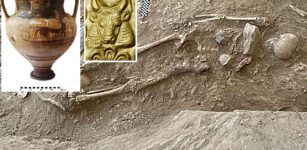 Tombs Rich In Artifacts Discovered By Swedish Expedition In Cyprus
Archaeology | Jul 6, 2023
Tombs Rich In Artifacts Discovered By Swedish Expedition In Cyprus
Archaeology | Jul 6, 2023 -
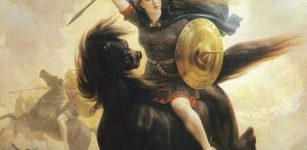 Mysterious And Powerful Valkyries In Norse Mythology: The Choosers Of The Slain
Featured Stories | Dec 1, 2015
Mysterious And Powerful Valkyries In Norse Mythology: The Choosers Of The Slain
Featured Stories | Dec 1, 2015 -
 Buried Ancient Roman Glass Has Formed Photonic Crystals – Extraordinary Discovery – Scientists Say
Ancient Technology | Sep 25, 2023
Buried Ancient Roman Glass Has Formed Photonic Crystals – Extraordinary Discovery – Scientists Say
Ancient Technology | Sep 25, 2023 -
 Evidence Of The Zanclean Megaflood In The Mediterranean Sea 5 Million Years Ago
Earth Changes | Jan 22, 2025
Evidence Of The Zanclean Megaflood In The Mediterranean Sea 5 Million Years Ago
Earth Changes | Jan 22, 2025 -
 The Red Dragon Of Wales – Ancient Symbol Dating Back To Roman Times
Ancient Symbols | Jan 3, 2018
The Red Dragon Of Wales – Ancient Symbol Dating Back To Roman Times
Ancient Symbols | Jan 3, 2018 -
 New Light On Appearance Of Scythians In Northern Black Sea Region
Archaeology | Mar 11, 2017
New Light On Appearance Of Scythians In Northern Black Sea Region
Archaeology | Mar 11, 2017 -
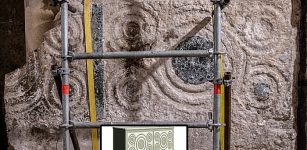 Graffiti Reveals Crusaders’ Beautiful Altar In The Church Of The Holy Sepulchre
Archaeology | Jul 24, 2024
Graffiti Reveals Crusaders’ Beautiful Altar In The Church Of The Holy Sepulchre
Archaeology | Jul 24, 2024 -
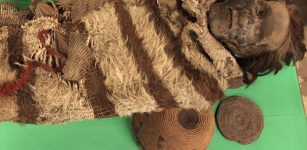 DNA Taken From Cement On Hairs Belonging To Ancient Mummies Shed Light On South American Ancestry
Archaeology | Dec 29, 2021
DNA Taken From Cement On Hairs Belonging To Ancient Mummies Shed Light On South American Ancestry
Archaeology | Dec 29, 2021


